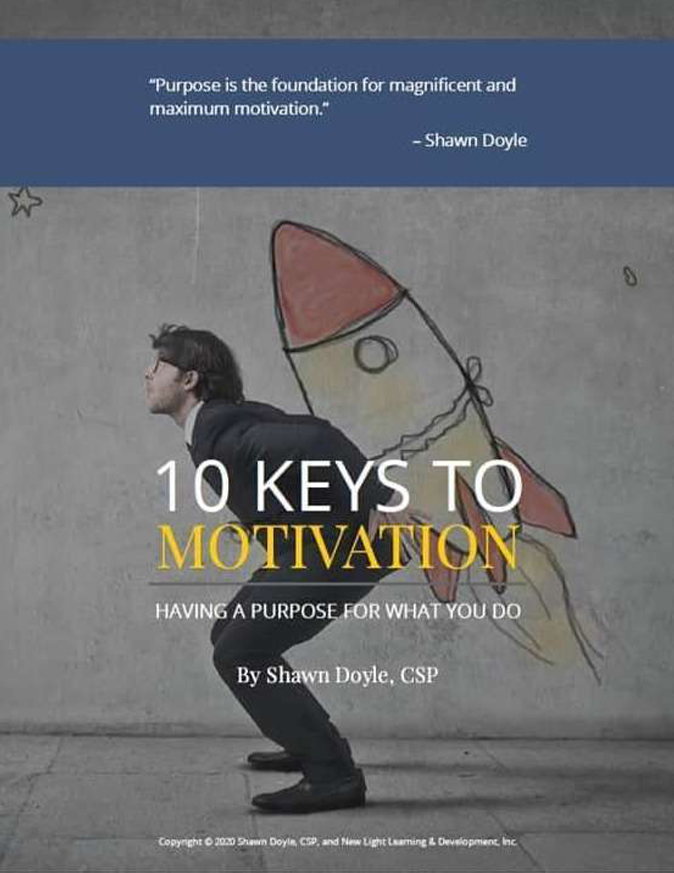Blog

Your Biggest Hidden Asset as a Leader
You’re probably sitting on a goldmine.
Do you want to make sure that you’re ready for next year? Consider developing your single biggest and often most overlooked asset: the undeveloped talent of each team member. Here are ten elements to look at for developing people.
#1 — Everyone gets development- If you have a department with sixteen employees, that means that each and every employee deserves and gets individual development. Sometimes, in my training program, someone will object to this concept. “Are you suggesting that my administrative assistant should have an Individual Development Plan?“ Yes. Because if you want an administrative assistant who’s fired up, dedicated and with high morale, the proven technique for getting that kind of commitment is committing to that employees’ development. Yet many leaders don’t ever do this.
#2 — Have an Individual Development Plan meeting. Each year, you should schedule each employee for an Individual Development Plan meeting. This meeting should be a conversation between you and the employee to determine their future career goals. After the discussion, the manager and employee should decide upon a specific and measurable individual Development Plan which will be rolled out over 12 months, to help the employee reach their career goals and aspirations, personally and professionally.
#3 — Individual development should not be part of your review process. In many organizations, people in a leadership role will combine the annual performance review with an Individual Development Plan meeting. They spend fifty minutes on the review and ten minutes on IDP. These two meetings should be and deserve separate, dedicated times. The review is talking about what they did; the IDP is talking about what they want to do. It also shows you care and respect them and are investing in them.
#4 — It should be their responsibility. Once the individual Development Plan meeting has occurred I believe it should be the responsibility of the employee to make sure that the IDP is rolling forward. It is their responsibility to take the actions that were decided on for the IDP and is up to them to schedule and set up meetings with you to update you on the progress. They have to own it. It is your responsibility to make sure that they’re following up with you to track the updates, and to provide resources and work to help them achieve their goals.
#5 — Make sure there is a timeline. If the action items are not put into a specific time line in the calendar then they just will not happen. You have to prioritize and “calendarize”. If you don’t nothing happens.
#6 — You have to care. In a leadership role, it is critically essential that you actually care about the results. If you, as a leader, are not truly committed to caring about the results, your employees will be able to tell you’re not authentic and you’re literally just going through the motions.
#7 — They have to care. When you sit down with an employee to create their Individual Development Plan they also have to care about growing and developing, and they have to be committed to the plan. If they don’t care about the results it’s simply an empty exercise.
#8 — Don’t discount people’s dreams. There may be an occasion where someone says during their IDP meeting, “I would like to be the CEO.” If someone aspires to a much higher level position, you may think it is not realistic, a ridiculous idea. But it is not up to you as a leader to squash potential. Your role and responsibility in a leadership position is to build people up and to help them move towards their dream.
#9 — Be flexible. It’s always important to be flexible. There may be times when an employee decides they want to leave your department. There may be times when an employee decides that they want to leave the company. It will be frustrating because you’ve spent time and effort developing this employee, only to have them leave. This is where flexibility can be an asset.
#10 — They may not know what they want. I am an executive coach for some high-level, high-powered C-level execs. Most of the time, they don’t know what they want. Don’t be surprised if an employee says, “I don’t know what I want.“ It then becomes your responsibility to be a coach and a mentor to help them decide what they want to pursue in the future.
The entire idea is to get each team member motivated and fired up about what they do currently and what they want to do in the future. Their undeveloped potential is your biggest and most openly-hidden asset.







